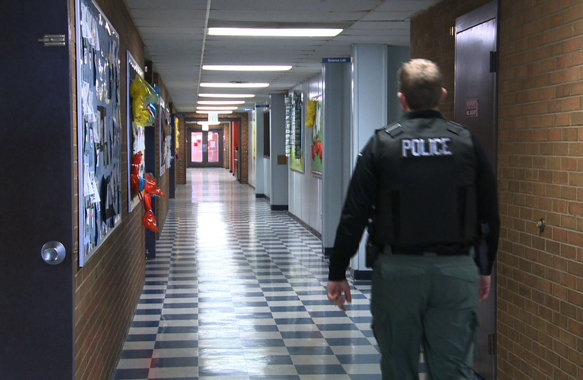Do we need to teach what comes naturally or would we be better to defy our need to control nature?
Teach Kids to Daydream
Today’s children are exhausted, and not just because one in three kids is not getting sufficient sleep. Sleep deprivation in kids (who require at least nine hours a night, depending on age) has been found to significantly decrease academic achievement, lower standardized achievement and intelligence test scores, stunt physical growth, encourage drug and alcohol use, heighten moodiness and irritability, exacerbate symptoms of ADD, and dramatically increase the likelihood of car accidents among teens. While the argument for protecting our children’s sleep time is compelling, there is another kind of rest that is equally underestimated and equally beneficial to our children’s academic, emotional, and creative lives: daydreaming.
I’ve been reading about daydreaming extensively lately, and it has caused me regret every time I roused one of my students out of their reverie so they would start working on something “more productive.” Daydreaming has been found to be anything but counter-productive. It may just be the hidden wellspring of creativity and learning in the guise of idleness.
Not all mental downtime is alike, of course. Downtime spent playing a video game or zoning out with a television show may have its charms, but the kind of downtime I am talking about is different. I’m talking about the kind of mind-wandering that happens when the brain is free of interruption and allowed to unhook from the runaway train of the worries of the day. When the mind wanders freely between random thoughts and memories that float through our consciousness, unbidden. Television, videogames, and other electronic distractions prevent this kind of mental wandering because they interrupt the flow of thoughts and memories that cement the foundation of positive, productive daydreaming.
Legendary cognitive psychologist Jerome L. Singer goes so far as to call daydreaming our default mental state. Singer proposed in his 1966 book, Daydreaming: an Introduction to the Experimental Study of Inner Experience, that we have two mental networks, working memory and daydreaming. The two cannot operate at the same time, so when we engage our working memory network, we shut off our daydreaming network.
The two forms of thinking may be different, and mutually exclusive, but they are both necessary to our emotional and intellectual health.
Scott Barry Kaufman, cognitive psychologist and author of Ungifted: Intelligence Redefined, argues that while this dreamy, reflective state might look like idleness to an outside observer, daydreaming kids are at work. “Ode to Positive Constructive Daydreaming”—an article Kaufman cowrote with Rebecca McMillan—reads:
There is, however, another way of looking at mind wandering, a personal perspective, if you will. For the individual, mind wandering offers the possibility of very real, personal reward, some immediate, some more distant.
These rewards include self- awareness, creative incubation, improvisation and evaluation, memory consolidation, autobiographical planning, goal driven thought, future planning, retrieval of deeply personal memories, reflective consideration of the meaning of events and experiences, simulating the perspective of another person, evaluating the implications of self and others’ emotional reactions, moral reasoning, and reflective compassion.
In other words, daydreaming only appears lazy from the outside, but viewed from the inside—or from the perspective of a psychologist, such as Kaufman, or a neuroscientist, such as Mary Helen Immordino-Yang—a complicated and extremely productive neurological process is taking place. Viewed from the inside, our children are exploring the only space where they truly have autonomy: their own minds.
Immordino-Yang’s work on the virtue of mental downtime includes the paper “Rest is not Idleness: Implications of the Brain’s Default Mode for Human Development and Education.” The title quotes a 19th-century British banker named John Lubbock, who wrote, “Rest is not idleness, and to lie sometimes on the grass under trees on a summer’s day, listening to the murmur of the water, or watching the clouds float across the sky, is by no means a waste of time.” Lubbock, according to Immordino-Yang, was way ahead of his time in understanding the value of idleness to our essential neurological functioning. What Lubbock called rest, Immordino-Yang calls “constructive internal reflection,” and she considers it is vital to learning and emotional well-being:
One aspect of Immordino-Yang’s paper is particularly relevant in today’s educational climate. She describes a study that shows mental downtime can alleviate the stress of standardized testing. The burden of periodic high-stakes testing is a source of stress for educators and students alike, but for students with test anxiety, these tests are particularly onerous and anxiety-provoking.
When researchers sought to find ways to alleviate the anxiety caused by high-stakes testing, they found that simply giving students a few minutes to think about and write down their thoughts on the test significantly increased test scores, particularly for students for whom test anxiety had become a habit. In the researchers’ words,
Expressive writing eliminates the relation commonly seen between test anxiety and poor test performance. Moreover, it is not any writing that benefits performance, but expressing worries about an upcoming high-pressure situation that accounts for enhanced exam scores under pressure.
How should parents and teachers respond to all this research about the benefits of mental downtime? For one thing, we should stop snapping our children out of their daydreams. Instead, we should protect this time much as we protect bedtime. Kick your children outside and close the door behind them. Encourage them go for a walk around the neighborhood without an electronic device. Tell your child what I have told you, that that silence and daydreaming are as important to their health and learning as sleeping and studying. Take a serious and objective look at how much time your child spends playing video games, responding to texts, messaging, watching television, or messing around on the Internet and carve out some of that time for daydreaming.
Model this behavior for them and re-discover your own love of daydreaming; don’t snap out of it, fall into it, and encourage your children to do the same. I have incorporated opportunities to daydream into my daily life, because they feed both my teaching and my writing. First thing in the morning when I am awake, but have not yet opened my eyes. On walks in the woods, free of earbuds or an agenda. The otherwise onerous and repetitive task of weed-pulling and raking has also proven fertile ground for this kind of mental meandering. The activity does not matter: Any place or occasion or task that allows the brain to wander will do.
Teach your kids how to just be. How to value silence and be at peace with nothing but their thoughts to occupy them. Make the romantic notion of laying back on the soft grass with nothing to do other than to watch the clouds pass overhead a reality. Teach them that, as Michael Pollan writes, “daydreaming is its own reward. For regardless of the result (if any), the very process of daydreaming is pleasurable.” To paraphrase two of my favorite dreamers, William Shakespeare and W.H. Auden, round out our children’s days with sleep and allow them to build their air castles undisturbed.
This article available online at: http://www.theatlantic.com/education/archive/2013/10/teach-kids-to-daydream/280615/
Copyright © 2013 by The Atlantic Monthly Group. All Rights Reserved.












Leave A Comment